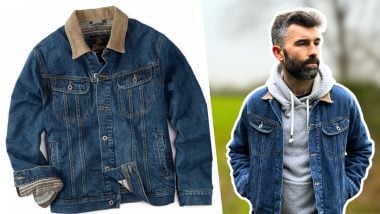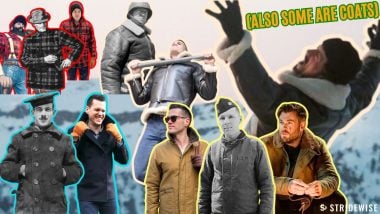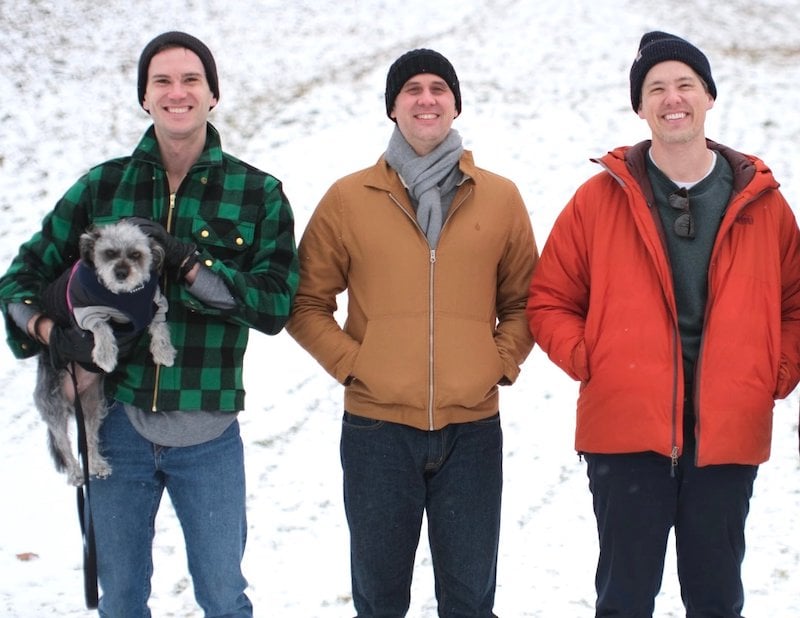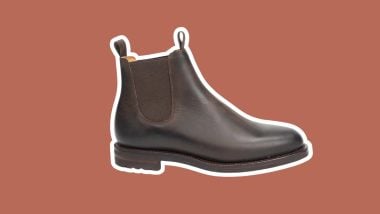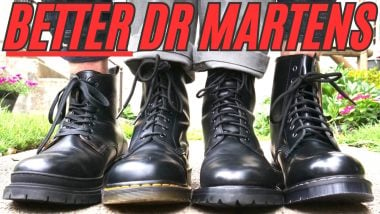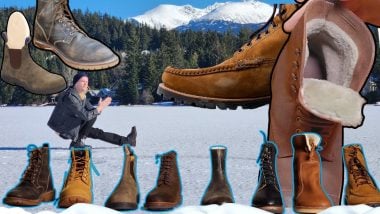Type 1 vs Type 2 vs Type 3 Denim Jackets: Which Is Right for You?
If you like boots or jeans, you’ll eventually arrive at a place where you considered getting a denim jacket. To say that jean jackets are iconic Americana is an understatement; they have been worn since the early 1800s.
In 1900, Levis made the Type I for railroad engineers, cowboys, and miners and from there, the seeds of the Type II and Type III were planted, sprouting decades later on the shoulders of celebrities like Marlon Brando and Marylin Monroe.
Yup, while you may not have known it, there are three very specific types of denim jackets you need to pick from if you’re going to rock an indigo top. So which one is best for you?
Breaking down these jackets can be overwhelming at first, buried under layers of denim jargon and history, but fortunately David Claxton, the Creative Manager of Son of Stag — the UK’s biggest heritage menswear store — was kind enough to walk me through the subtle, yet important, differences between these three classic jackets.
Background: American Denim Jackets
Before we get into the differences between these three jackets, I’ll briefly go over the history of the jean jacket.
Denim came to America via German immigrants in the 19th century.
“It all started in the late 1800s,” says Claxton. “Initially, they were called blouse jackets, and companies like Montgomery Ward and all the big retail department stores would produce their own kind of blouse jacket.”
Further Reading

How to Style a Denim Jacket for Men: Uncomplicating Cool
No matter which denim jacket you go with, make sure you know how to wear it best. Learn more →
Levi Strauss made the first jean jacket in America in 1880, called the Triple Pleat Blouse. While our modern minds hear blouse and think of women’s tops, the word originally meant lightweight upper garment of linen or cotton, and comes from the French word blouse, meaning the smock of a workman or (in less politically correct terms) peasant. Like most popular heritage clothes, the jean jacket was made for people working in mines, as cowboys, or on America’s newly formed railroads.
Over the ensuing decades, the jackets had three iterations that are so iconic, companies still make reproductions of the original Levi’s.
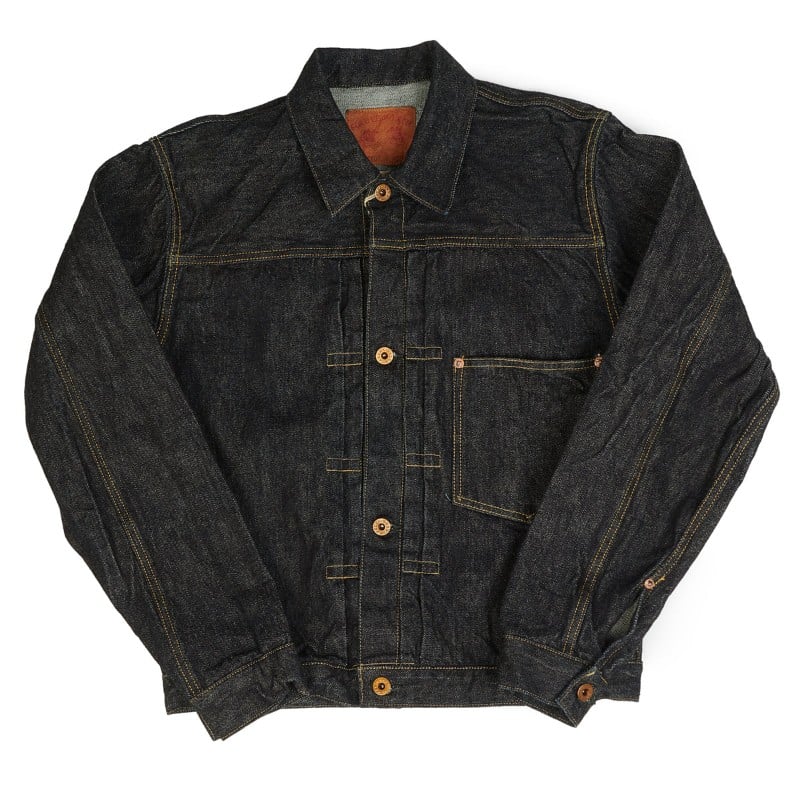
What’s a Type I Jacket?
The Type I is often referred to as a Trucker Jacket. It predates trucking as we know it, of course, and its design was influenced by cowboys for horse-powered transport. This cut became popular among long haul truckers because of its short length — no sitting on your tails here.
Type I Defining Features
- Short, boxy, and roomy
- Single chest pocket
- Belt cinch on lower back
- Back pleats
- Knife pleats on the front
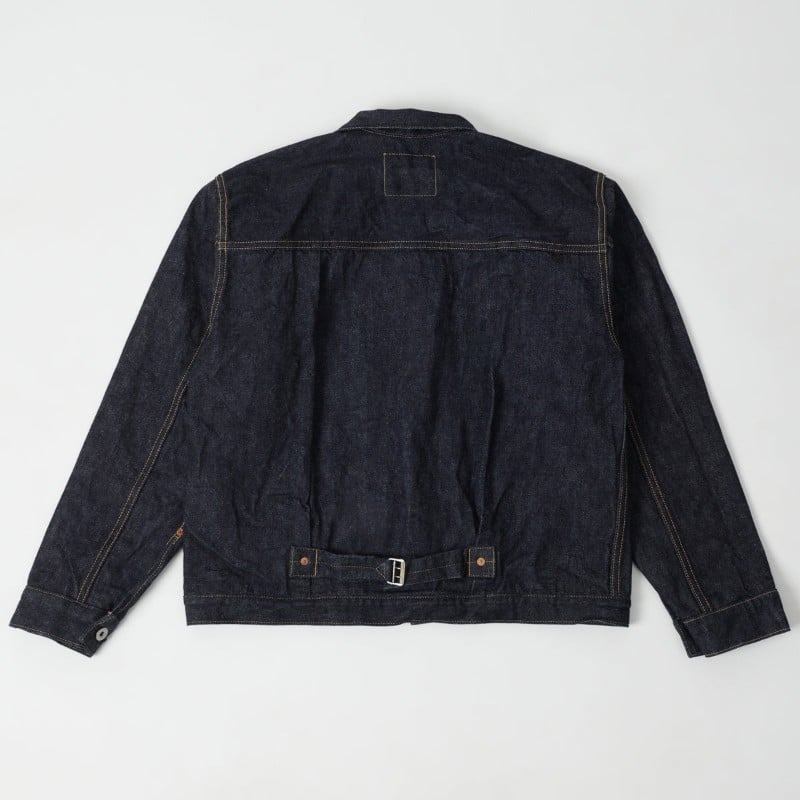
“Levi’s came out with the first type around the turn of the 20th century,” says David, “The pressed in pleats on the back is the defining feature of Type I. They are there so that when you’re on horseback, you’ve got lots of freedom of movement. There’s also a cinch back, which is quite the iconic feature that allows one to adjust the waist if one’s weight, or the jacket itself, fluctuates in size.”
Further Reading
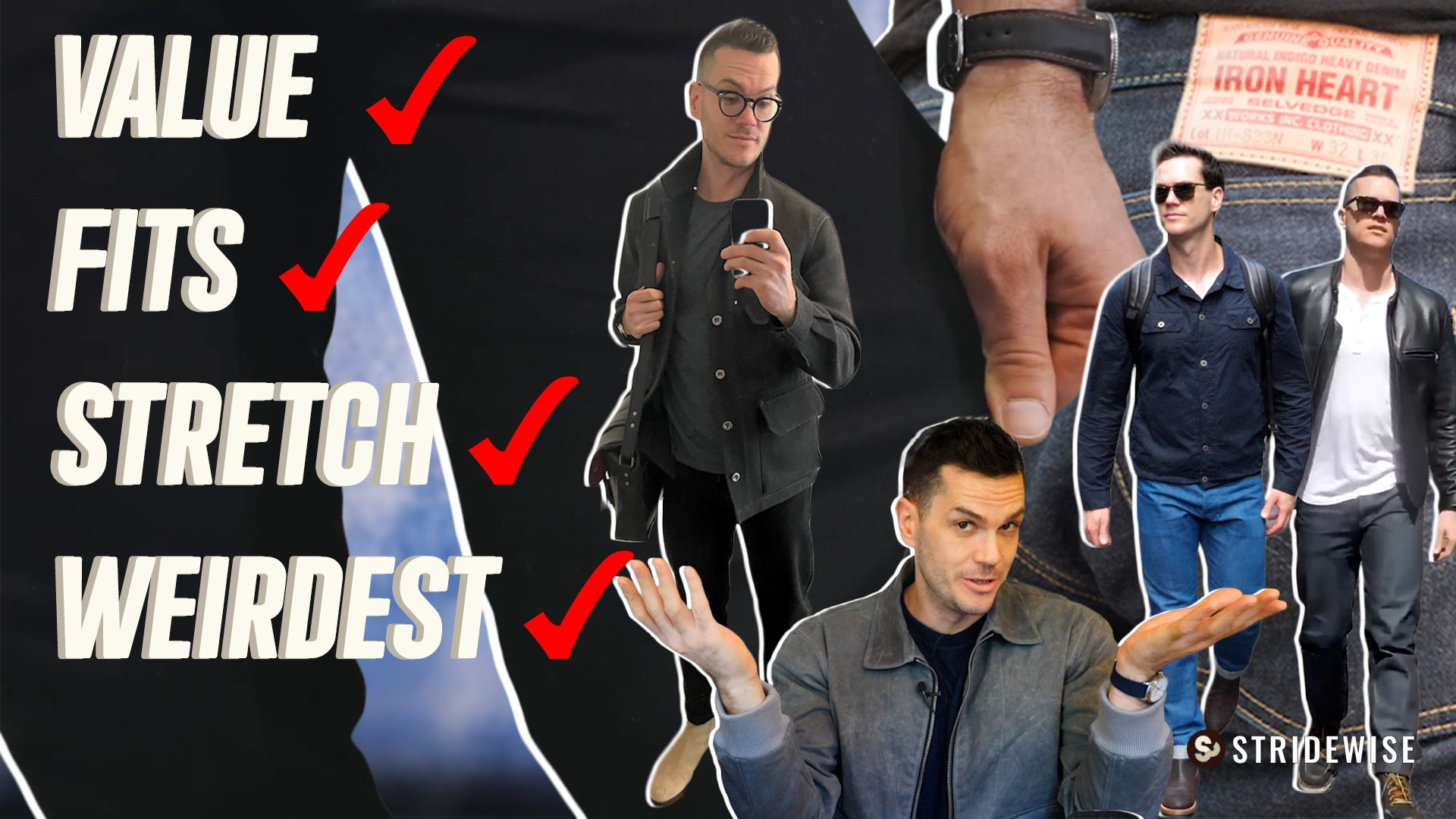
Best Selvedge Denim: 9 Solid Brands Expert Tested for Quality, Value, & Weirdness
Up your denim game with some cool Japanese selvedge denim jeans. Learn more →
The Type 1 is as old fashioned American as a denim jacket gets. Its other identifiable aspects include ‘donut’ style buttons, a single chest pocket, and the knife pleats sewn in around the front’s button panel: “They’re partly a decorative touch, but it also allows for a bit of movement in the front in the chest as well as across the back,” says Claxton. “So basically: short and boxy, lots of movement, and lots of room for layering up as well.”
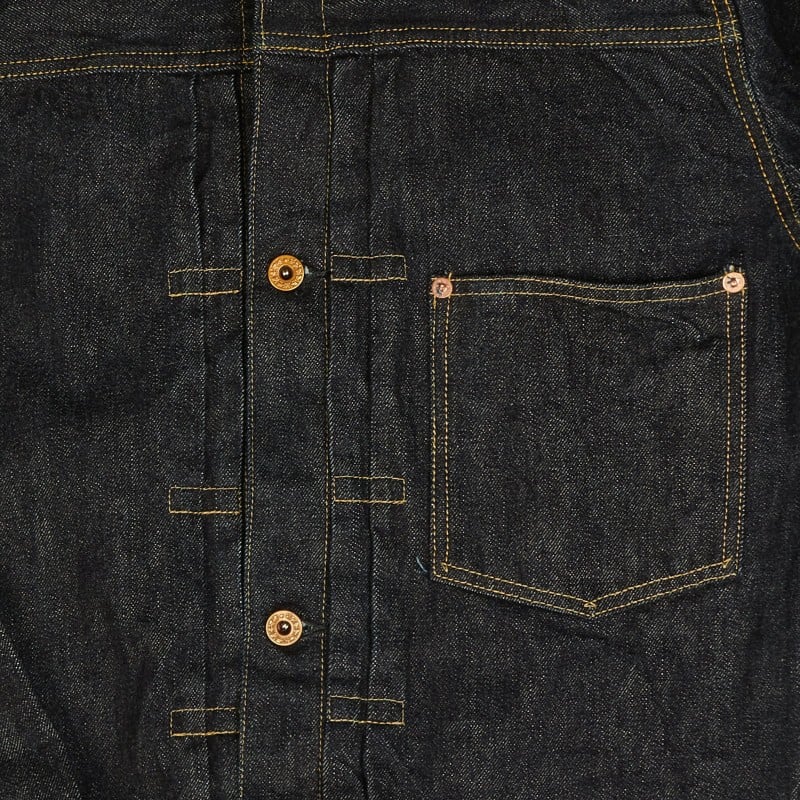
The Type I has the fewest pockets of the three styles with just the one on the front chest. (No traditionally made denim jackets have hand pockets in the side, but plenty of modern variations have added them in — to the chagrin of traditionalists.)
The Type I only changed slightly over the years.
“Pre-1936 Type Is wouldn’t have the pocket flap you find on the pre-1936 Type I,” David pointed out. “After ’36, the pocket tab has been added. You can still see the rivets are there, still got the cinch back but it’s becoming a bit more what we know as a modern jacket.”
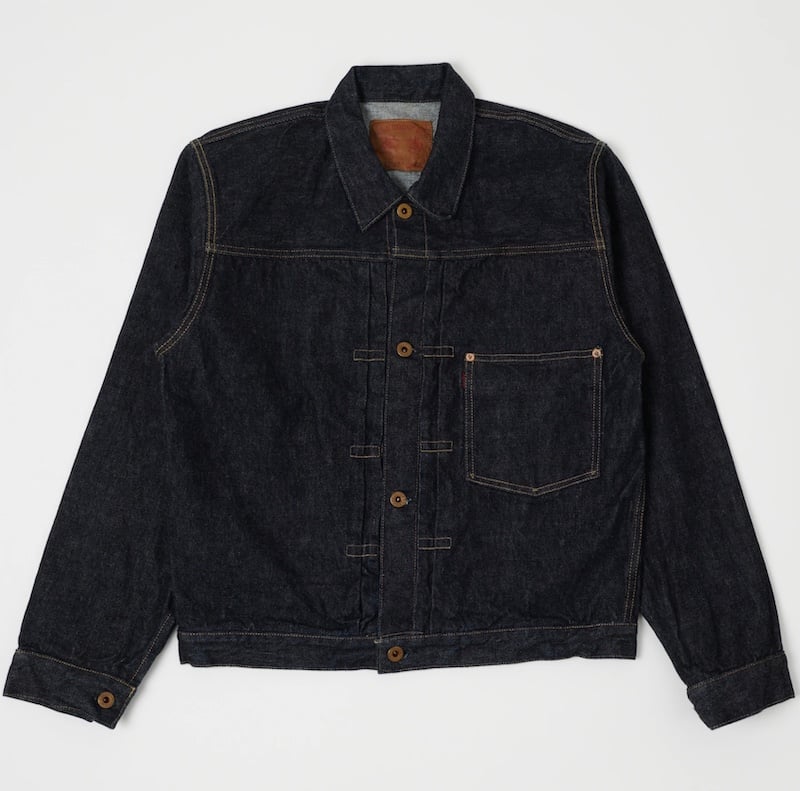
The Best Type I Jackets
If every company just copied the original design of the Type I exactly, it might get… perhaps not boring, but repetitive for the heritage guy‘s collection
“Some brands will go ahead and make the body of a Type I really long,” says Claxton. “And that and that’s unheard of in terms of like, heritage accuracy.”
If you want an accurate reproduction of a pre-1936 Type I, Full Count makes a 13.75oz jacket that’s just called the Type I Denim Jacket (above). It has all of the iconic design elements including the single pocket, donut buttons, front knife pleats, back pleats, and waist cinches.
Another classic example of a 1936 Type I is Oni’s Natural Indigo Jacket (below). It has a short, boxy shape, donut buttons, and is made with expensive natural indigo dye.
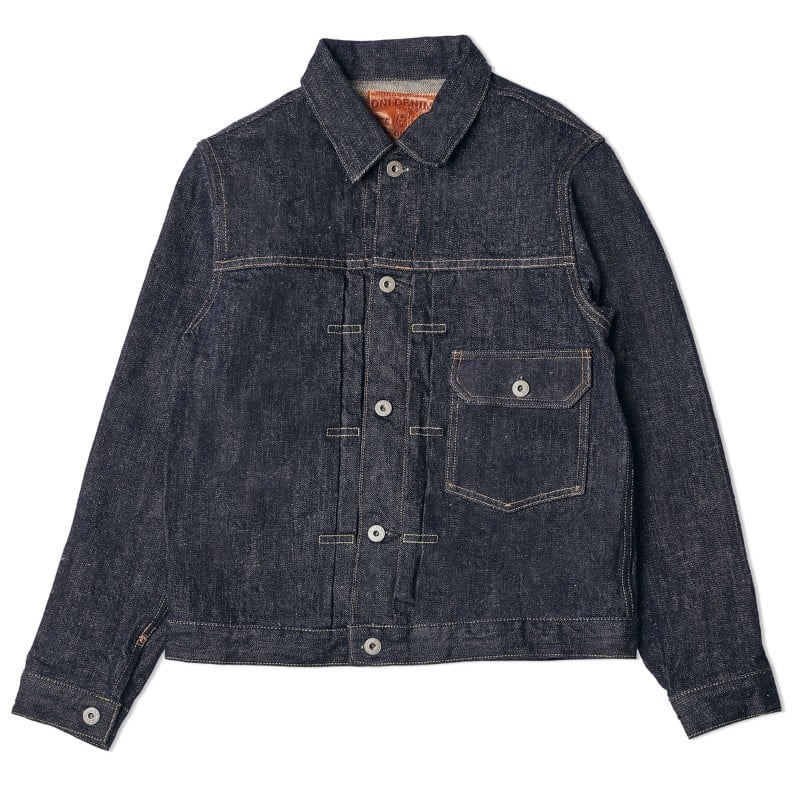
Who Should Buy a Type I Jacket?
- Guys who want an iconic heritage jacket that has boxy fit
- Anyone with a short torso
- Guys with a little extra room around their waist and prefer roomier fits
- Heritage workwear aficionados who want to compliment a classic outfit like high-waisted jeans and Engineer boots
Who Shouldn’t Buy a Type I Jacket?
- Guys who want a more modern fitting jacket; this jacket has a somewhat old-fashioned look
- Anyone who like lots of pockets
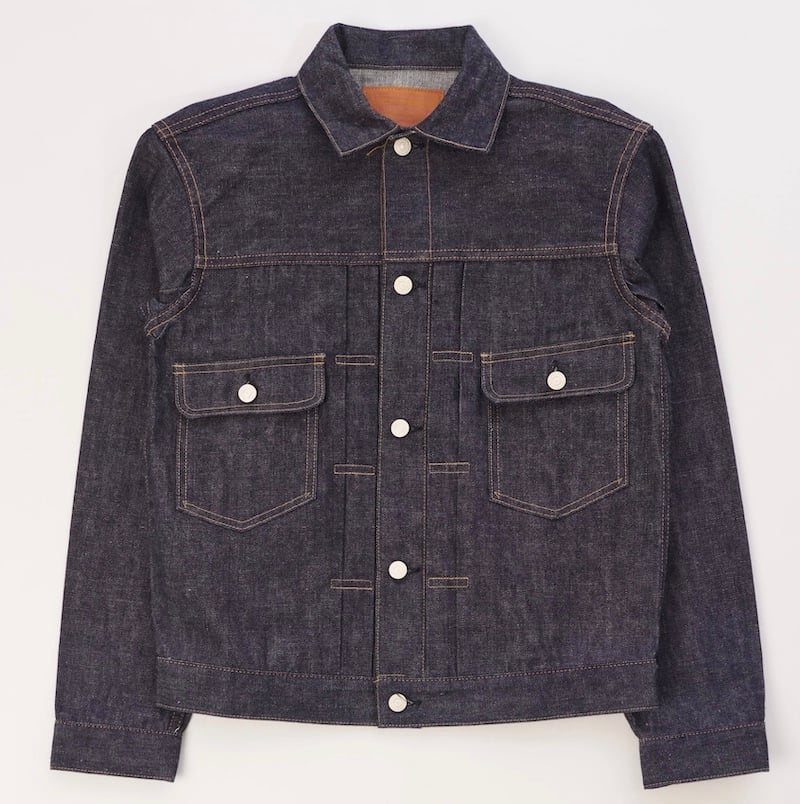
What’s a Type II Denim Jacket?
The more modern-looking and more common Type II came out in 1953’s post-war America.
Type II Features
- Waist epaulettes
- Slightly longer and slimmer than a Type I
- Two chest pockets with flaps
- Bar tack stitching
Explaining the difference between the two eras, David noted.
The Type 2 is typically a bit longer, typically a little slimmer, it doesn’t have as many rivets. It’s got an extra pocket on the front, all of the pockets have the flaps. We’ve lost the cinch at the back and replaced them with these adjustable waist cinches with button tabs.
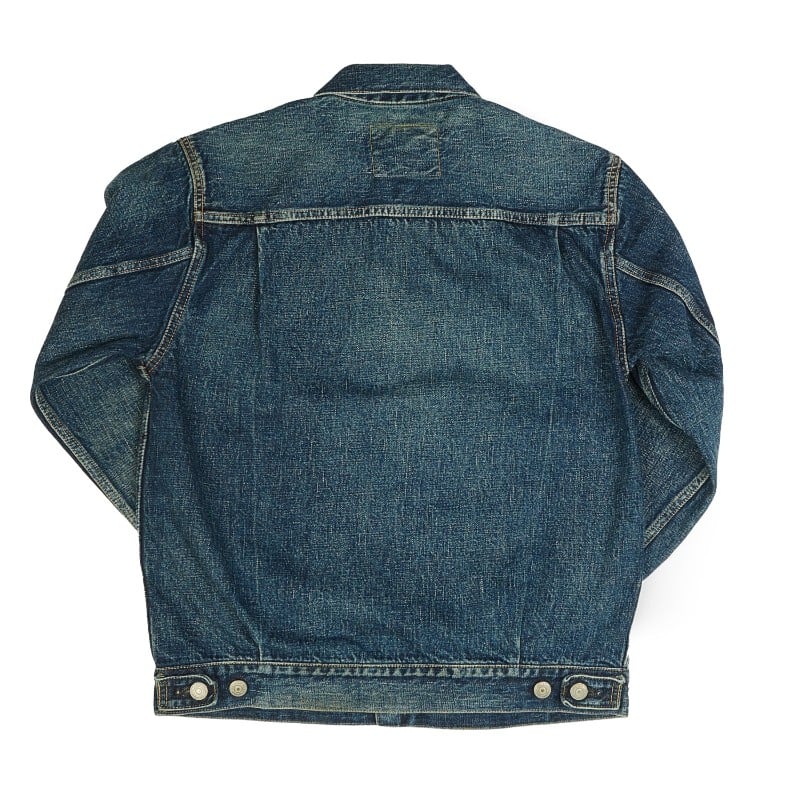
If you are ever shopping for a Type II and see the word ‘waist epaulettes,’ that’s a term for the adjustable waist cinches with button tabs that David mentioned: you can button the bottom of the jacket to bring in the waist a little if the waist is a bit big for you. (V-shaped torsos rejoice.) They also have thick bar tack stitches, essentially stress bearing areas that have been reinforced with extremely dense collections of stitches.
The knife pleats remain to allow for some freedom of movement and to allow one to cut them open if they’ve gained a few pounds or want to layer underneath.
“Without the knife pleats, it would probably lose its shape very easily. It looks great, so why not?” says Claxton. “In some models they align with the buttons, on some they don’t, on some they have less. Some really early Montgomery Ward-style jackets will just have one in the middle.”
The rugged, durable nature of the jacket didn’t diminish but Levi’s was no long only seeing this as purely functional workwear — now it had become a product that can be marketed and sold as a fashion item.
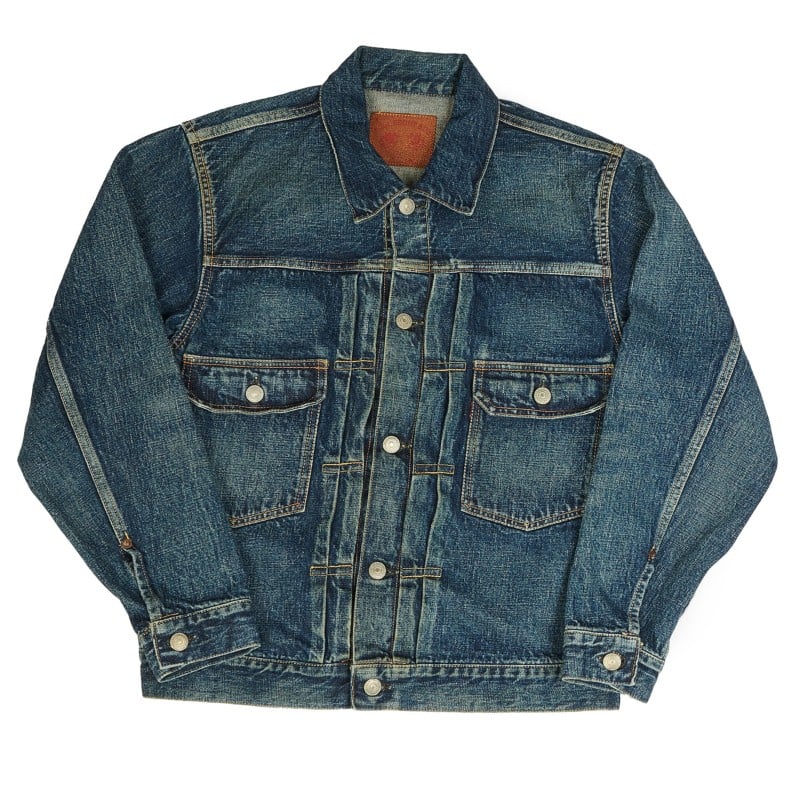
Examples of Modern Type II Jackets
“In terms of traditional denim jacket types, they go on a like a quite an identifiable journey in terms of fit,” says Claxton. “But then as time goes on, different brands get quite playful with how they make changes.”
The type is II is reproduced by many brands but Son of a Stag is a big proponent of Warehouse & Co’s 2002x Type II for traditionalists. It’s known for painstakingly reproducing the measurements and materials of old.
Full Count’s “Real Killer” Type II has a boxy shape, double breast pockets, pleats, and waist epaulettes, but it differs from the original Levi with looser sleeves and more of a drop in the shoulders — and the pre distressed look will make it go over well with modern crowds.
An even more modern example of a Type II is Oni’s 02516P-OGW, an organic white denim interpretation (below). It’s slimmed down and the chest pockets sit higher so that they can put (the controversial) double-entry pockets below them. Handwarmer pockets are more common with Type III.
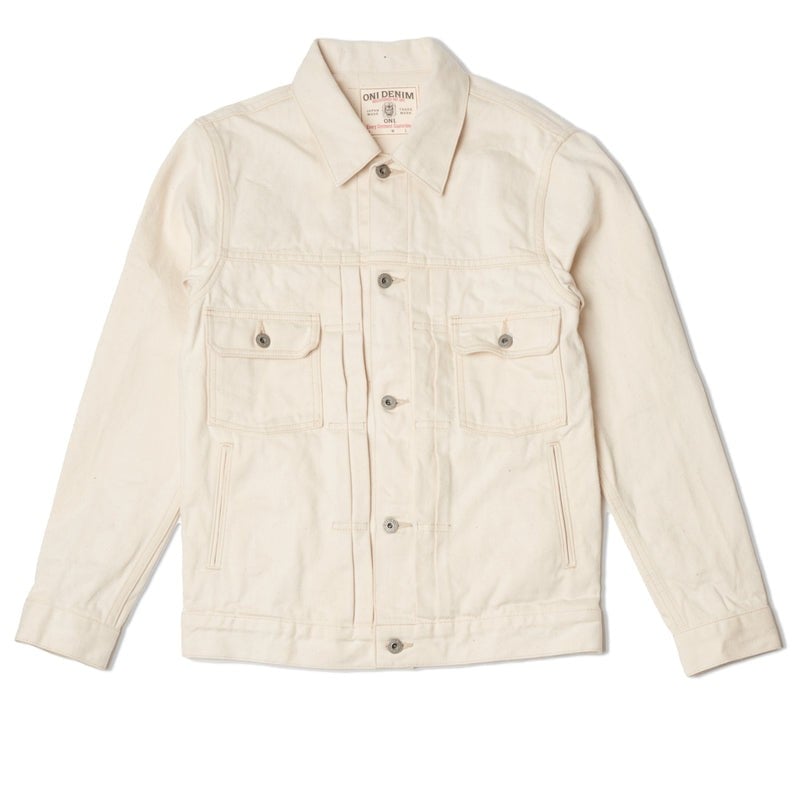
Who Should Buy a Type II Jacket?
- Guys who want a slightly more modern fit than the Type I but not as modern looking as the Type III
- Slimmer taller guys with broad shoulders
- Folks who are after more storage with the extra chest pocket
- Guys who want to be able to cinch the waist slimmer with button tabs
Who Shouldn’t Buy a Type II Jacket?
- Guys who don’t like that the chest pockets sit midway down the torso
- Those want the most modern, pocketed jacket you can get — that’s the Type III
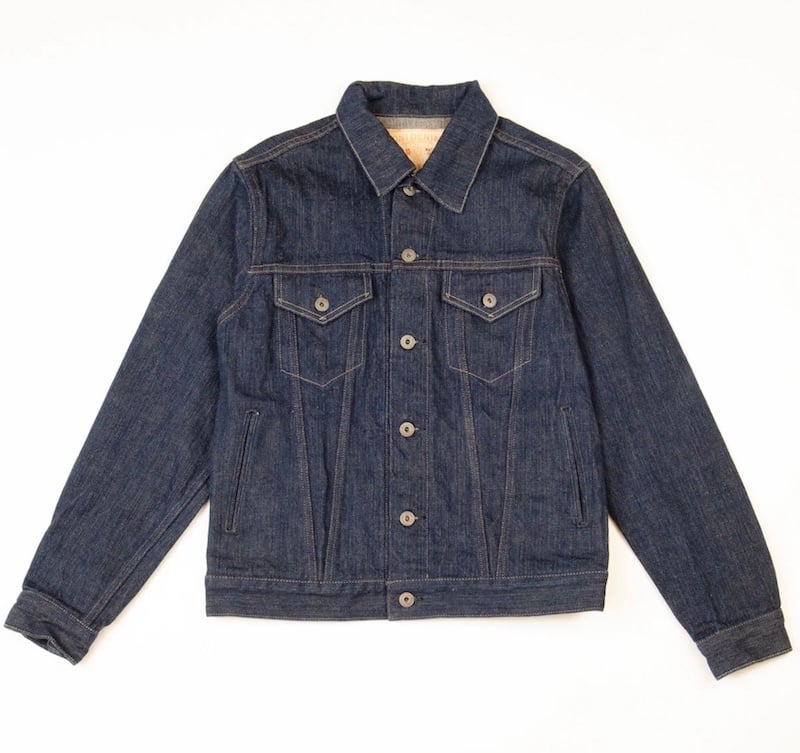
What’s a Type III Jacket?
The Type III was released in the 1960s and as Claxton notes, “it’s probably the most drastic change between between the type iterations.” This is by far the most popular kind of denim jacket; if any mall brand decides to try their hand at a jean jacket, you can bet it’ll be a Type III.
Type III Features
- No pleats
- V-shaped stitching under chest pockets
- Two chest pockets with flaps
- Side pockets below chest pockets (sometimes)
- Longer, slimmer cut than a typical Type I and Type II
Claxton breaks it down:
The Type III slightly longer, a little slimmer in the arms, slightly longer arms. The knife pleats are gone. You’ve got this “V” sewn in. No pleats. It’s got that nice sort of V-shaped pocket construction with copper top buttons. In some regards it’s simpler: even though you’ve got these big “V”s under the pockets, you’re losing the pleats.
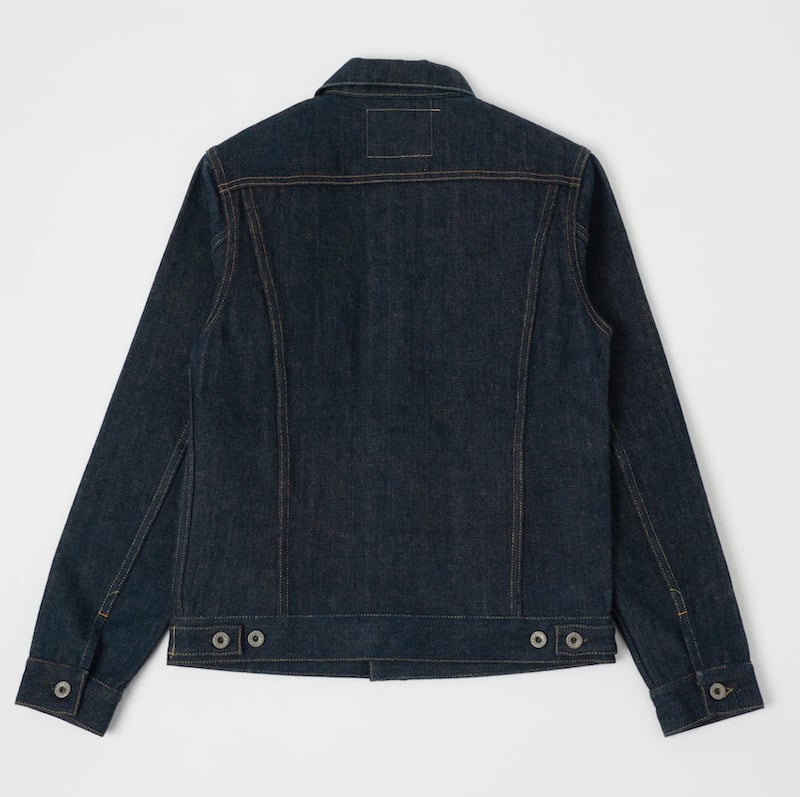
Why the iconic V-shaped stitching under the pockets? It’s just slimming, says Claxton.
“So as a design, it brings everything to the center of the jacket everything follows on, doesn’t it? Like with the V that points down to the to the pleat layer at the front and the same on the back,” he says. “That’s the design where the pleats would have been, and now it’s sewn in rather than just having loose fabric.”
View this post on Instagram
Examples of Modern Type III Jackets
There are countless interpretations of Type III. I have the Oni 02527ZR “Secret Denim” version, above, mostly because it had the longest torso I could find, but also because Oni is world renowned for their “Secret Denim” that’s woven on vintage shuttle looms.
As mentioned, brands tend to innovate more with this model; a great example is the all black Oni 02207 Kiraku (below), spun at super low tension for maximum slubbiness and breathability.
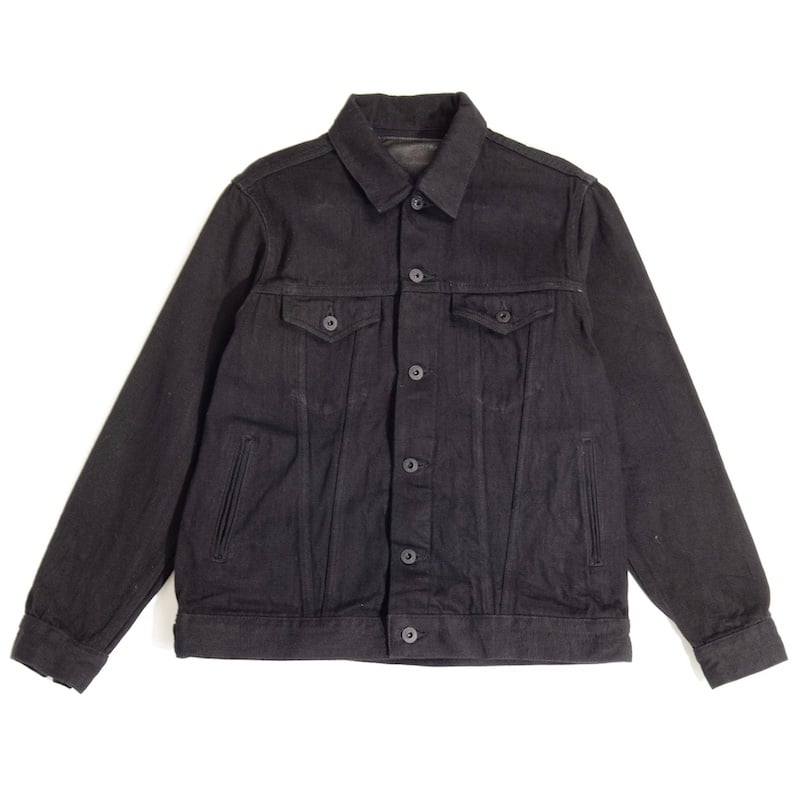
Who Should Buy a Type III Jacket?
- Anyone looking for a modern denim jacket
- Guys who like the slimming, pleatless look
- You like having front pockets
- Longer and leaner guys
Who Shouldn’t Buy a Type III Jacket?
- You want a more classic look and fit you get with the Type I
- Anyone who wants a few more features like pleats and cinches
Wrapping Up
I hope this cleared up the differences between the Type I, II, and III jackets. I picked up an Oni Type III at Son of a Stag and I’m very excited to break it in and see the electric fades appear with time.
If you’re looking to get a denim “blouse” yourself, perhaps the main takeaway is that the Types progress from short and boxy to modern and slimming with each iteration. If you’re the most comfortable with the most common model, opt for a Type III,
Thanks to David Claxton for taking the time to teach me all about the history and metamorphosis of denim jackets at his London store!

